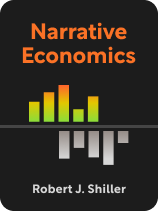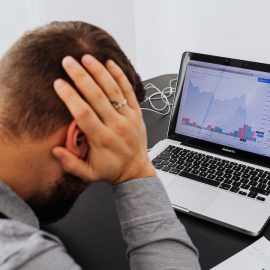

This article is an excerpt from the Shortform book guide to "Narrative Economics" by Robert J. Shiller. Shortform has the world's best summaries and analyses of books you should be reading.
Like this article? Sign up for a free trial here.
What if economists collaborated with psychologists and sociologists? How could they benefit from spending more time on social media?
In Narrative Economics, Robert J. Shiller argues that human beliefs and actions, rather than numbers and statistics, ultimately drive economic outcomes. From this perspective, he suggests that we adopt new approaches that broaden our understanding of economic events and help us make better predictions.
Read more to learn about Shiller’s proposed narrative-based economic forecasting methods.
Economic Forecasting Methods
Shiller writes that we need to develop tools that help us predict and prepare for the narratives that will take hold in the future. Given the real economic power that narratives hold, it’s essential to understand their origins, propagation, and eventual decline. Shiller suggests that economists do this by adopting narrative-based economic forecasting methods. Specifically, he recommends that they embrace qualitative (in addition to quantitative) research and look for new sources of narratives in traditionally overlooked places.
Shifting to Qualitative Research
Shiller writes that economists must venture beyond their traditional quantitative approaches and pay heed to the emotions and impulses that shape the decisions of the real people who constitute the economy. This shift calls for a more nuanced and multidisciplinary approach.
To gain a deeper understanding of how narratives influence economic behavior, economists should engage in qualitative research methods. This includes conducting interviews with individuals, organizing focus groups, and undertaking longitudinal studies to measure how attitudes and beliefs evolve over time. Collaborating with experts in psychology and sociology can offer valuable insights into the cognitive processes that drive the formation and spread of narratives.
| A Humanist Approach to Economics? Some observers write that there has long been a divide between economists and practitioners of more humanist fields—and call for a more humanistic approach to economics. These academics argue that traditional economics often focuses too narrowly on quantitative models and mathematical analysis while neglecting the human experience, emotions, and narratives that shape economic behavior. They emphasize the importance of incorporating insights from the humanities, social sciences, and arts to build a more comprehensive understanding of economic phenomena. They believe that by doing so, economists can address real-world economic challenges more effectively. In addition to reshaping economics, these scholars advocate for changes in education. They argue for a curriculum that encourages critical thinking, interdisciplinary learning, and a deeper understanding of the cultural and societal contexts in which economic decisions are made. Their vision is to train economists who can think critically, appreciate the complexity of human behavior, and apply their knowledge to real-world problems. |
Finding New Sources
Moreover, writes Shiller, economists should broaden the scope of their work by analyzing sentiments and ideas found in sources that have typically been overlooked in traditional economic analyses. These sources include anything from sermons, social media posts, pop culture references, and memes to advertisements and historical documents like diaries, land deeds, wills, and newspaper editorials. These diverse sources provide windows into how ordinary people throughout history have thought about and engaged with economic concepts.
Shiller’s call for economists to tap into previously overlooked data sources to better understand economic narratives reminds us that our traditional quantitative sources—government statistics, industry data, official demographics—only began being compiled and published recently.
| Qualitative Data and Ancient Economics Much of what we know about the ancient world relies on data that is largely qualitative. This includes data that’s been inferred and reconstructed through various historical and archaeological sources, including: • Written records in the form of inscriptions, clay tablets, papyri, and manuscripts • Archaeological evidence, such as physical artifacts, buildings, and infrastructure, that provides clues about economic activities, the layout of ancient cities, and production facilities • Ancient coins, which provide insights into the monetary systems of the time and help us estimate economic activity and wealth distribution • Historical accounts like chronicles, diaries, and writings of historians and travelers that provide anecdotal evidence of economic conditions, trade practices, and notable economic events • Comparative studies that look at multiple sources and cross-reference them to validate their findings and create a more complete picture of ancient economies Economists could glean far more insights about the human decision-making that drives the economy by tapping into this rich vein of qualitative data. |

———End of Preview———
Like what you just read? Read the rest of the world's best book summary and analysis of Robert J. Shiller's "Narrative Economics" at Shortform.
Here's what you'll find in our full Narrative Economics summary:
- How human beliefs and actions, not statistics, drive economic outcomes
- The factors that contribute to the spread of economic narratives
- The significant economic consequences of the American Dream






